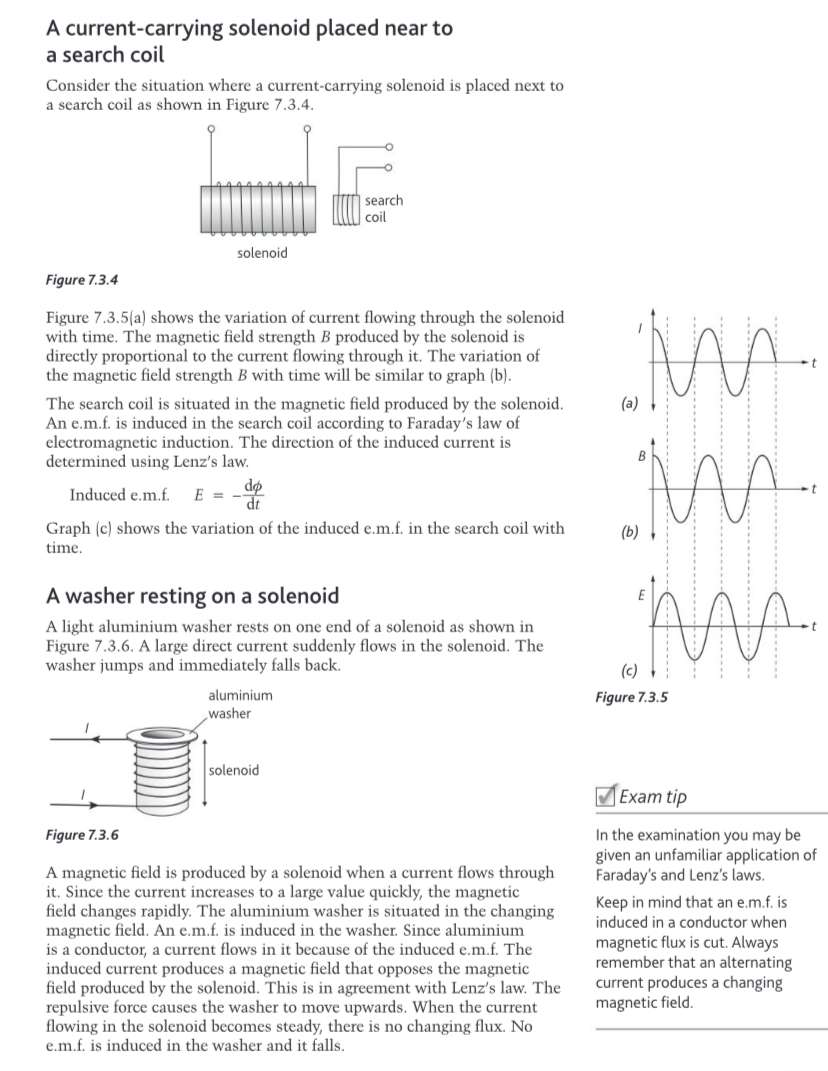Magnetic Fields & Electromagnetic Inductio
1/50
There's no tags or description
Looks like no tags are added yet.
Name | Mastery | Learn | Test | Matching | Spaced |
|---|
No study sessions yet.
51 Terms
Explain the concept of a magnetic field
A magnetic field is the region around a magnet, current-carrying wire, or moving charged particle where another magnetic material or moving charge experiences a force.
The field is made up of invisible lines called magnetic field lines or lines of force.
The direction of a magnetic field at a point is the direction in which the north pole of a small magnet would move if placed at that point.
The strength of the magnetic field is shown by how close the lines are:
Closer lines = stronger field
Lines farther apart = weaker field.
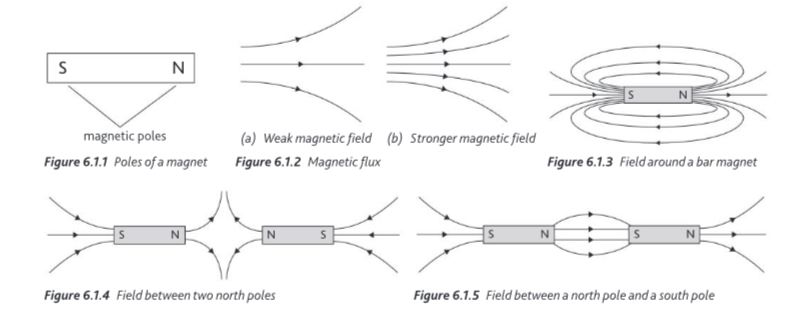
Define electromagnetic induction
Electromagnetic induction is the production of an electromotive force (e.m.f.) across a conductor when there is a change in magnetic flux linking the conductor.
What’s the relationship between electric force and magnetic force
They are equal and opposite in direction
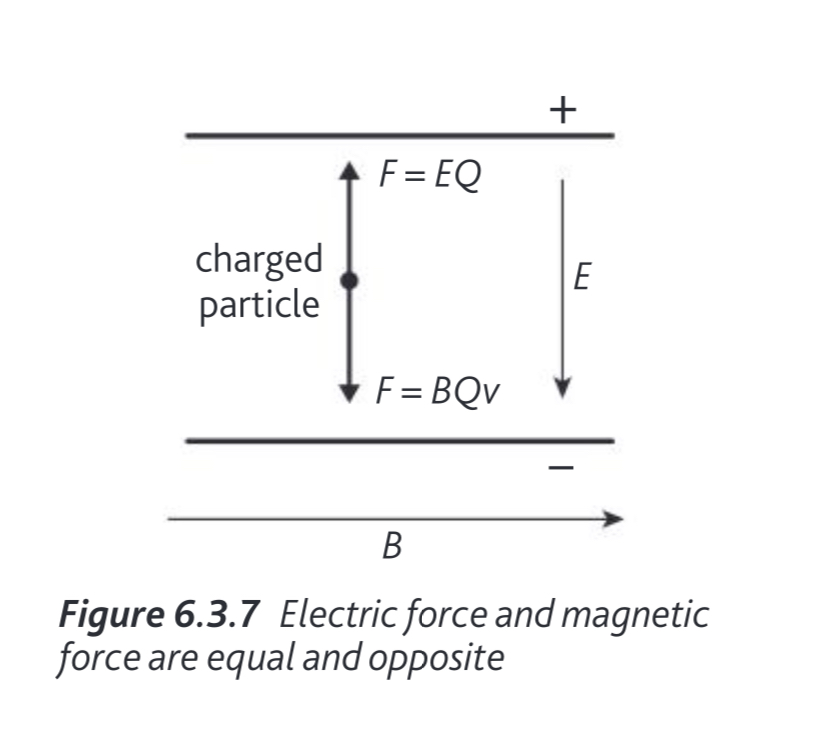
Draw a diagram showing how a charged particle would act when an electric field and magnetic field are at right angle to each other
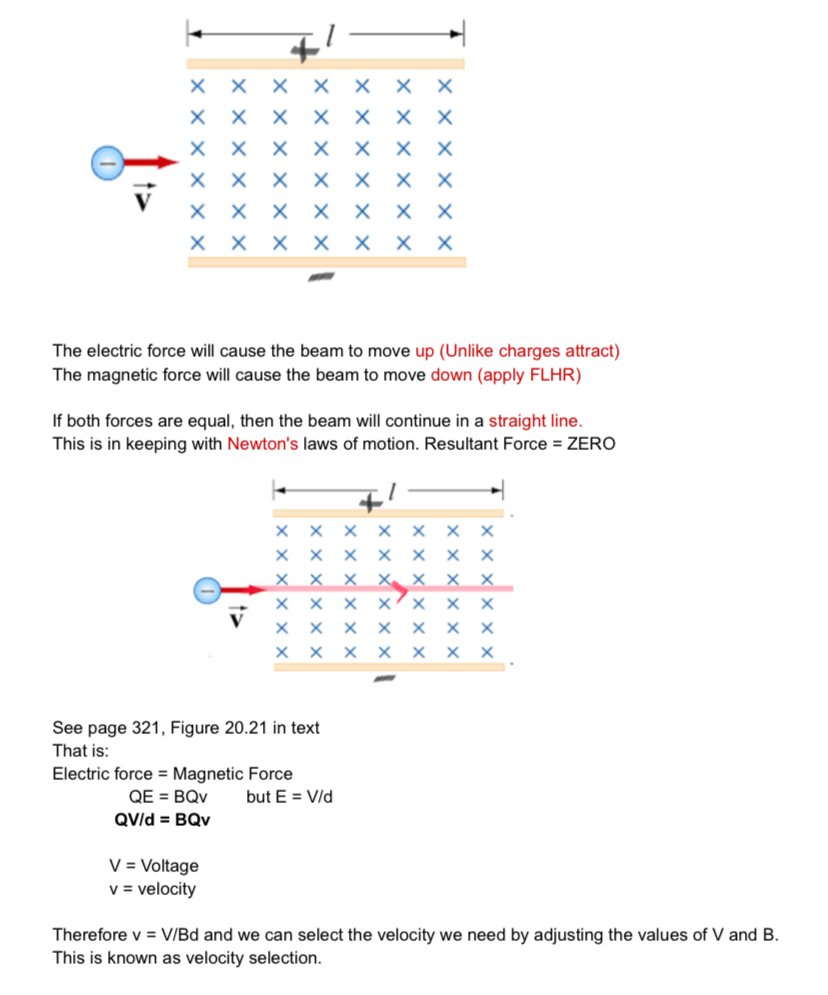
What happens to a charge when it enters a magnetic field and why
It moves towards the plate (positive plate if the charge is an electron) and (negative plate if the charge is a proton) in a parabolic path
Because velocity is horizontal and
Acceleration is vertical
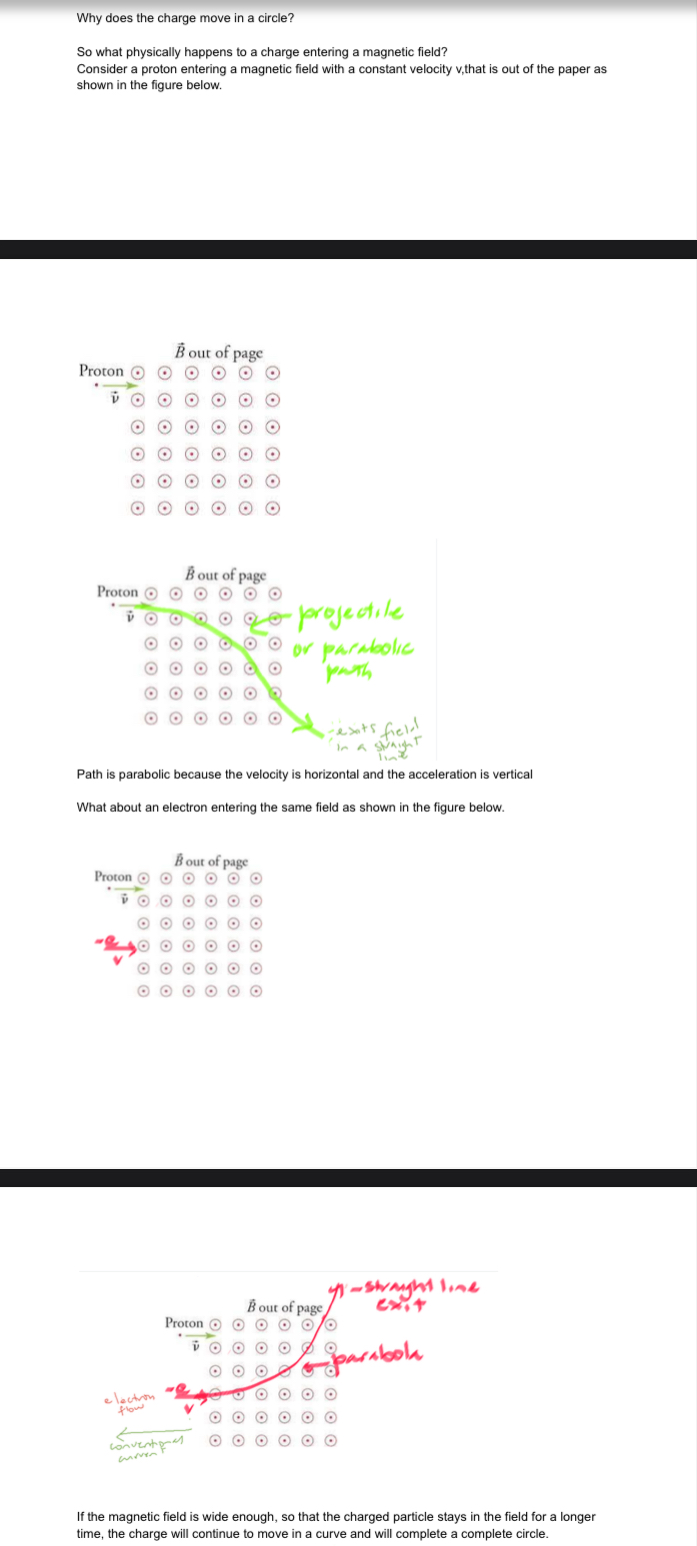
When a charge enters a magnetic field,
If the magnetic field is wide enough, so that the charged particle stays in the field for a longer time, what will happen?
the charge will continue to move in a curve and will complete a complete circle.
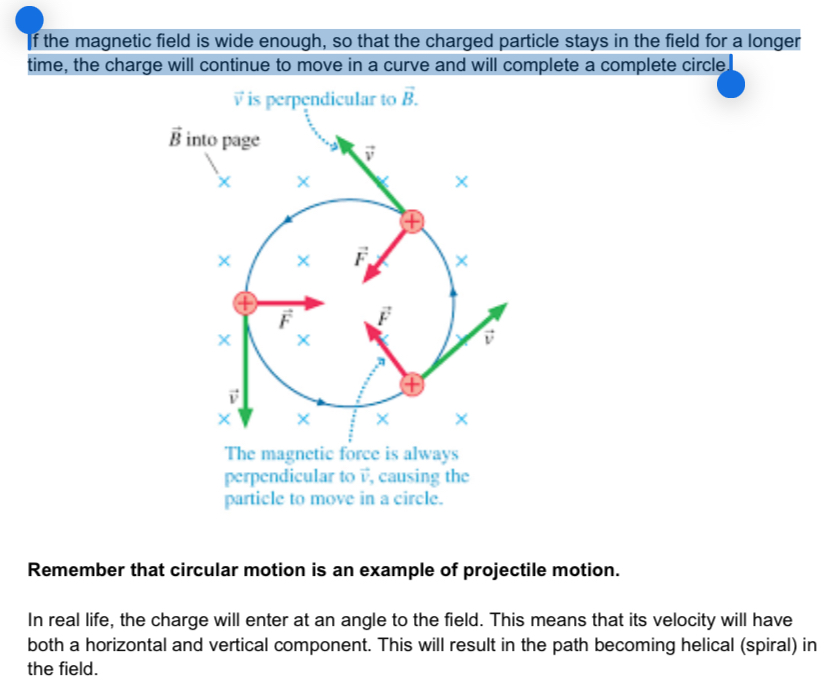
When a charge enters a magnetic field,
If the magnetic field is not uniform then what will happen?
the path becomes a decreasing spiral
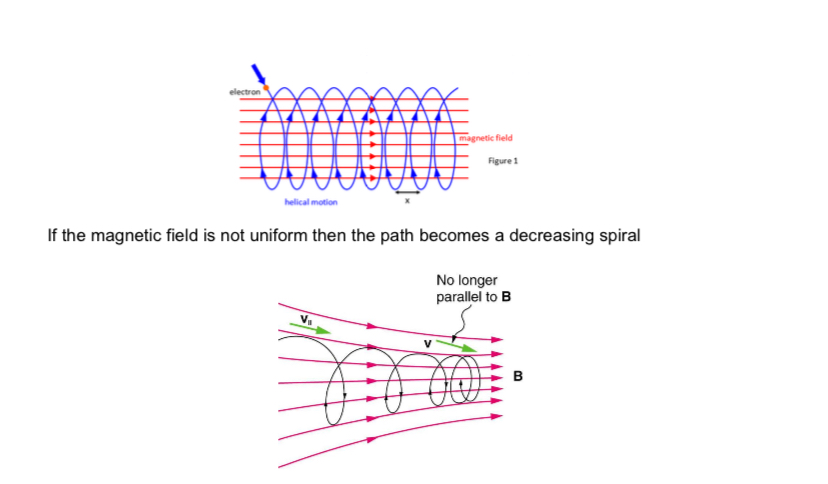
The direction of a field produced by current flowing through a wire can be determined by…
Right hand grip rule
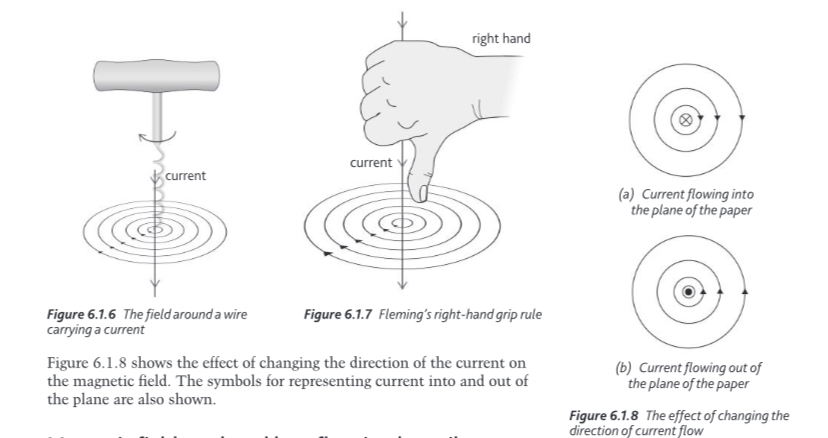
Define the direction of a magnetic field
The direction of the magnetic field line at a point is the direction of the force that would act on a north pole placed at that point
Sketch the flux pattern for a long straight wire
A long straight current-carrying wire (concentric circles around wire).
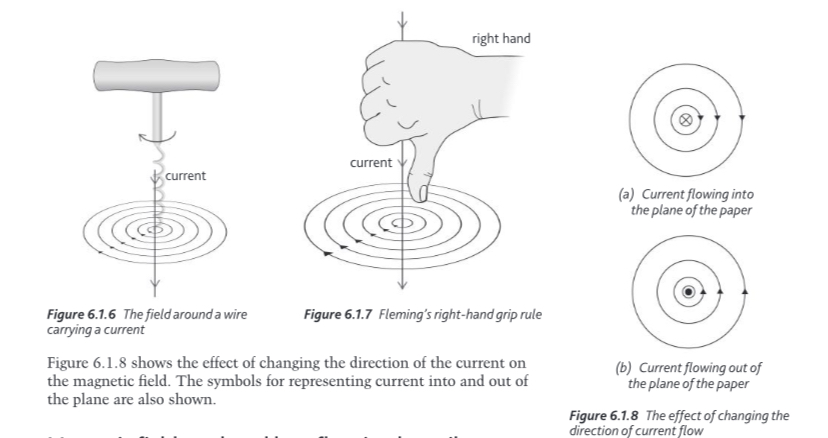
Sketch the flux pattern for a flat coil
A flat circular coil (looped lines through and around the coil).
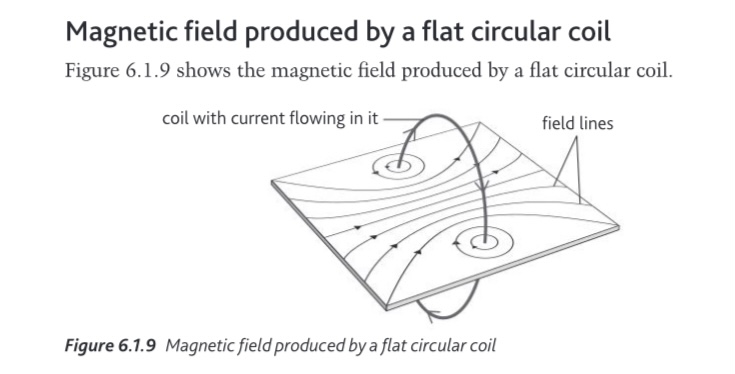
Equation for the magnetic flux density for a at a distance, r, from a straight current carting conductor
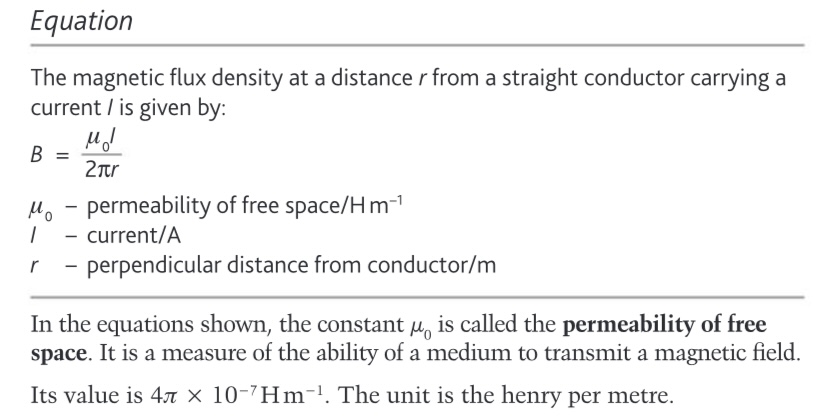
Equation for the magnetic flux density for a from the center of flat circular coil
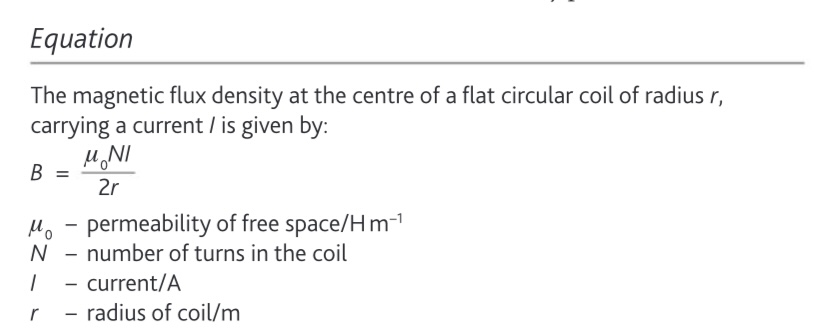
Equation for the magnetic flux density from the center of A long solenoid with, n, number of turns and carrying current, I
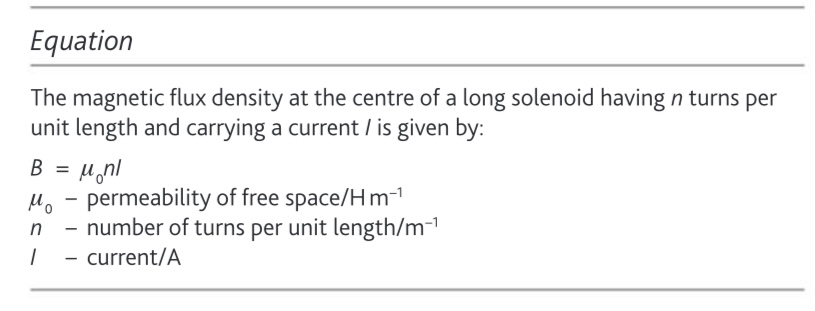
Draw diagrams of how force can act in current carrying conductor between magnetic field

The direction of force that can act in current carting conductor between magnetic field
Can be determined by
Flemming’s left hand rule
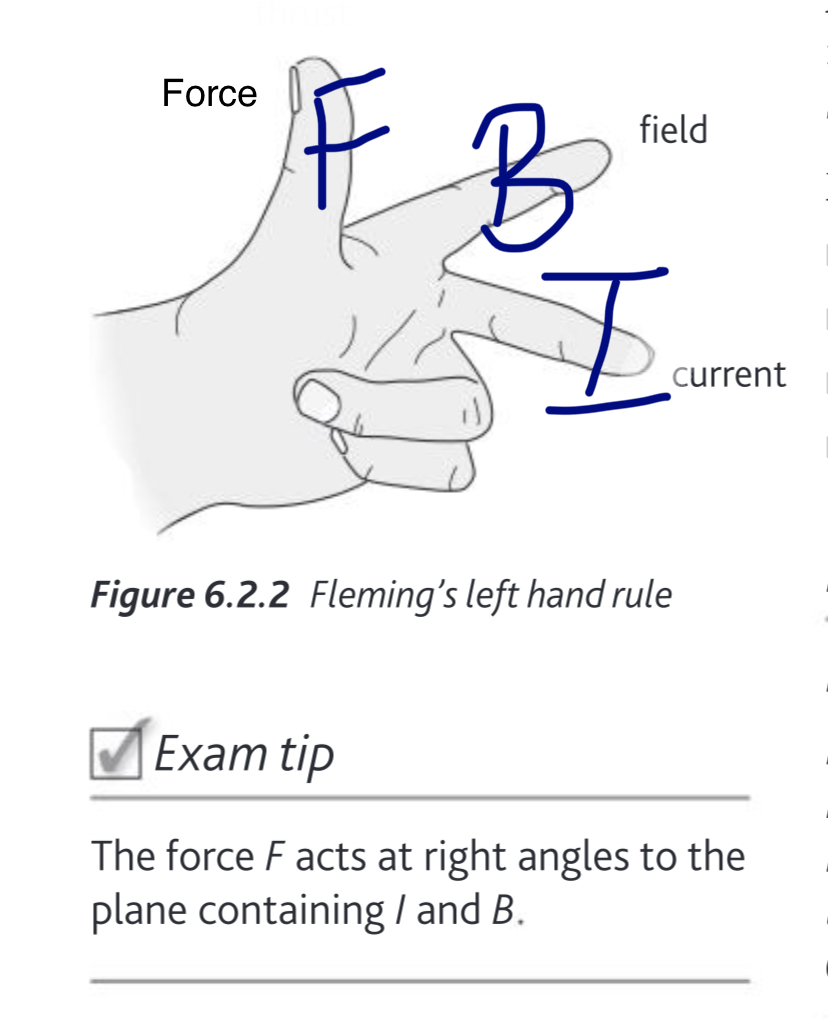
Sketch the flux pattern for a solenoid
A long solenoid (similar to a bar magnet, with clear north and south poles)
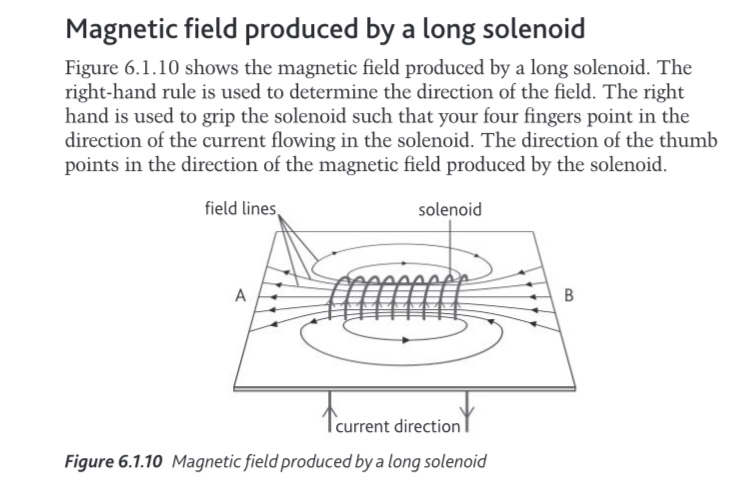
True or false - a force might act on a current carrying conductor when placed in a magnetic field
True
Define magnetic flux density
Magnetic flux is the total number of magnetic field lines (or the total magnetic field) passing through a given area.
It is a measure of how much magnetic field passes through a surface.
Define Tesla
1 tesla is defined as the magnetic flux density that produces a force of 1 newton on a conductor 1 metre long carrying a current of 1 ampere at right angles to the magnetic field.
In other words:
1 T = 1 N A⁻¹ m⁻¹
Equation for force acting on a conductor
F = BILsin θ
where:F = force (N)
B = magnetic flux density (T)
I = current (A)
l = length of conductor (m)
θ = angle between current and magnetic field
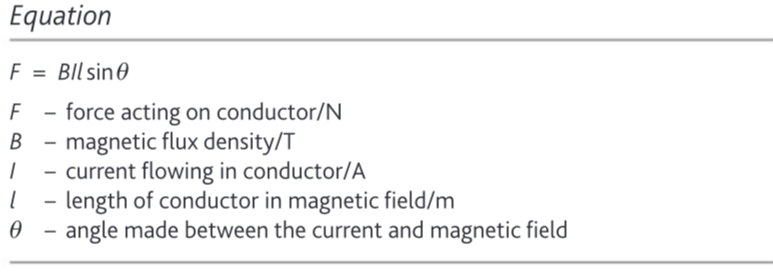
What is the effect of force when the angle is changed
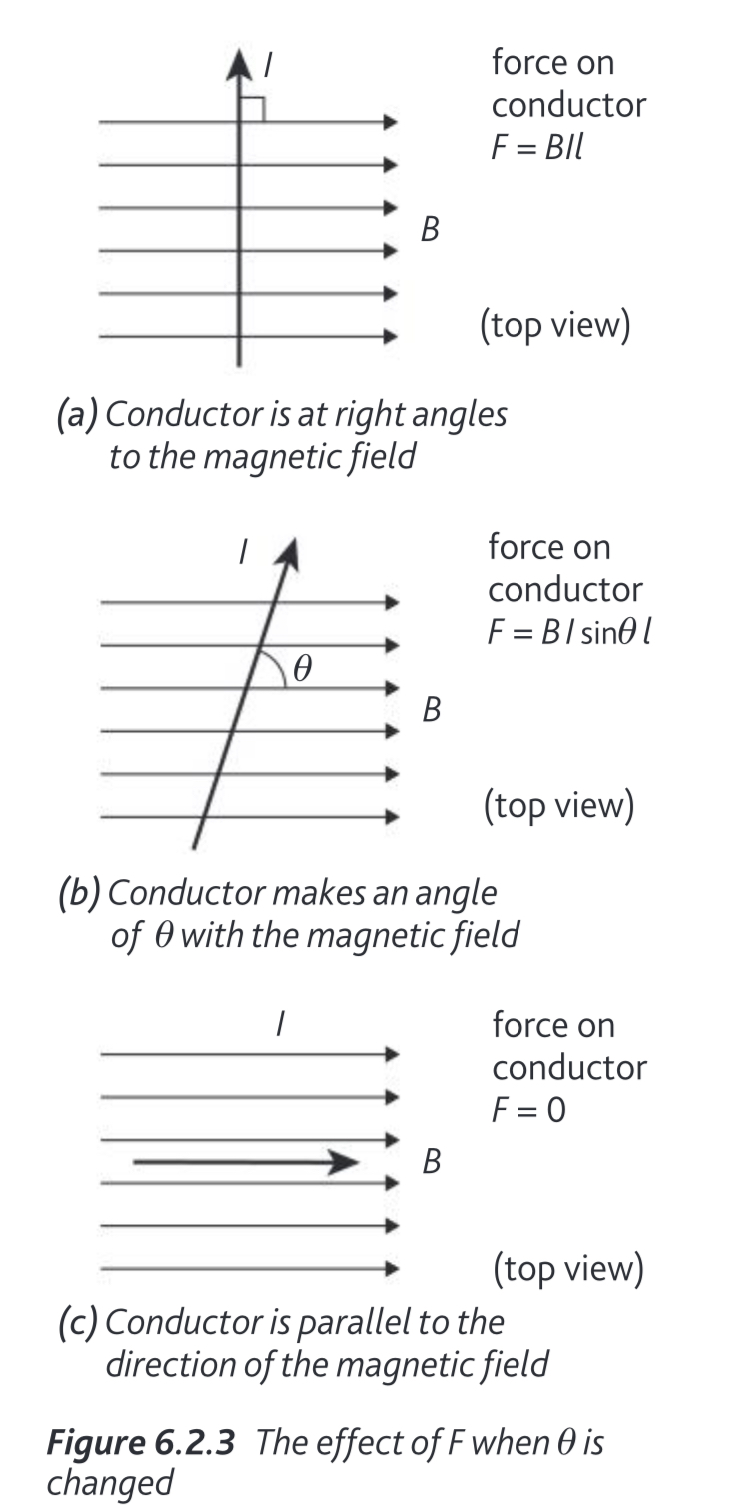
Equation for magnetic flux density
Just transpose - F = BILsin θ
B = F / (ILsinθ)
where:
B = magnetic flux density (tesla, T)
F = force on the conductor (newtons, N)
I = current (amperes, A)
l = length of conductor in the field (metres, m)
θ = angle between the conductor and the magnetic field
T or F -
magnetic field is the region where a magnetic force is experienced.
True
Equation for force on a moving charge
F = BQv sin θ
where:F = force on charge (N)
B = magnetic flux density (T)
Q = charge (C)
v = speed (m/s)
θ = angle between v and B
What is the condition for no deflection on a moving charge
Condition for no deflection: E = Bv.
A particle can move in a circular path or a helical path.
What causes this?
depends on their angle to B
T or F For a moving charge
No change in speed; only direction changes
True
Explain the Hall effect:.
A potential difference is set up transversely across a current-carrying conductor when a perpendicular magnetic field is applied
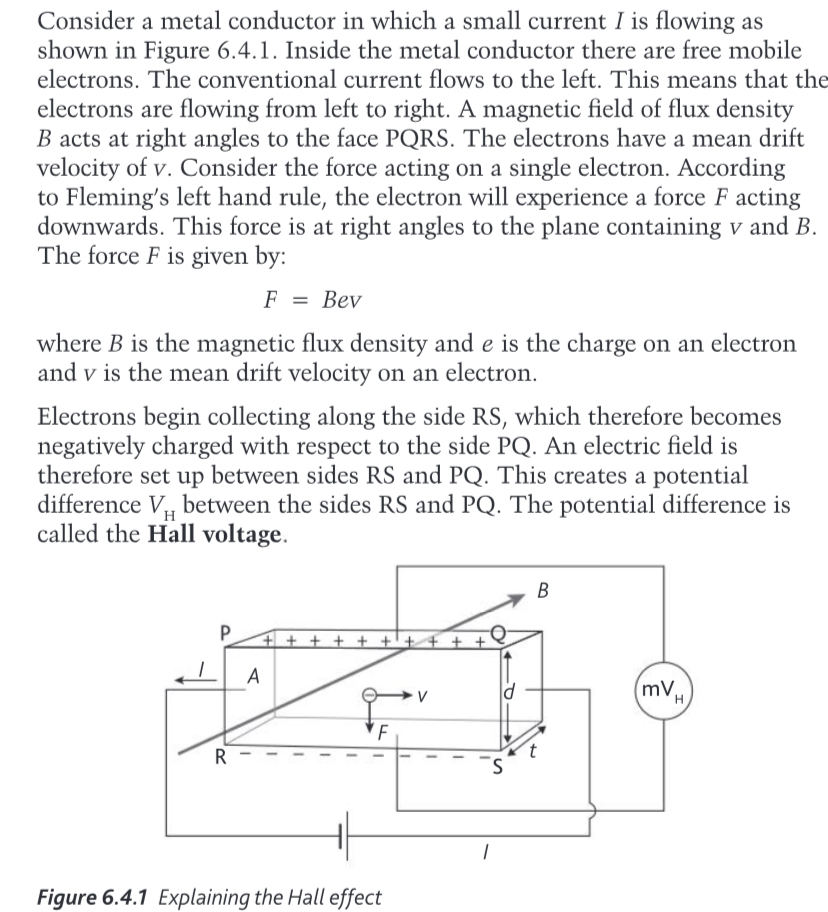
explain how a Hall probe is used to measure magnetic flux density
A Hall probe is used to measure magnetic flux density. It consists of a thin slice of semiconductor carrying a steady current. When the probe is placed in a magnetic field at right angles to the direction of the current, a potential difference, called the Hall voltage, is generated across it. The Hall voltage is proportional to the magnetic flux density.
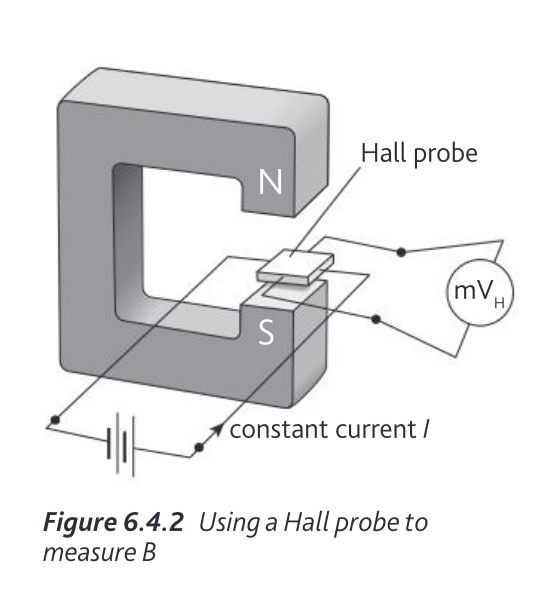
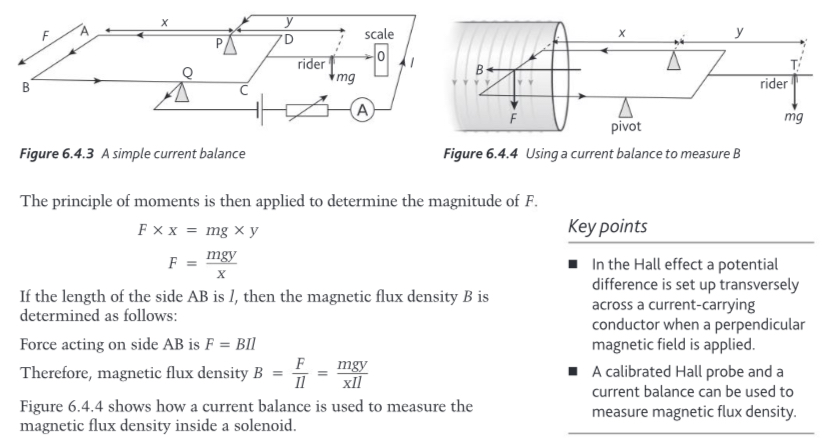
describe and explain the force between two current-carrying conductors
Two parallel current-carrying conductors exert a force on each other. If the currents are in the same direction, the force is attractive. If the currents are in opposite directions, the force is repulsive.
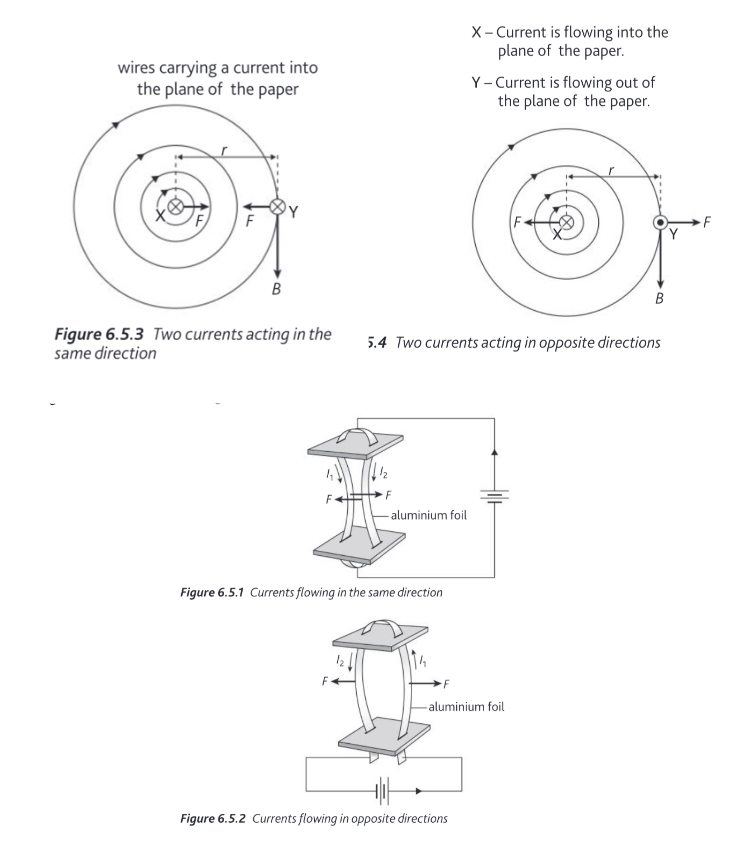
state the formula for the force per unit length between two parallel current-carrying conductors


T or F
True
describe the construction and operation of an electromagnet
An electromagnet consists of a coil of insulated wire wound around a soft iron core. When a current flows through the coil, the core becomes magnetised.
state the properties of a soft iron core in an electromagnet
The soft iron enhances the magnetic field because it has high magnetic permeability and low retentivity, which means it loses its magnetism easily when the current is switched off and it’s able to concentrate magnetic field lines
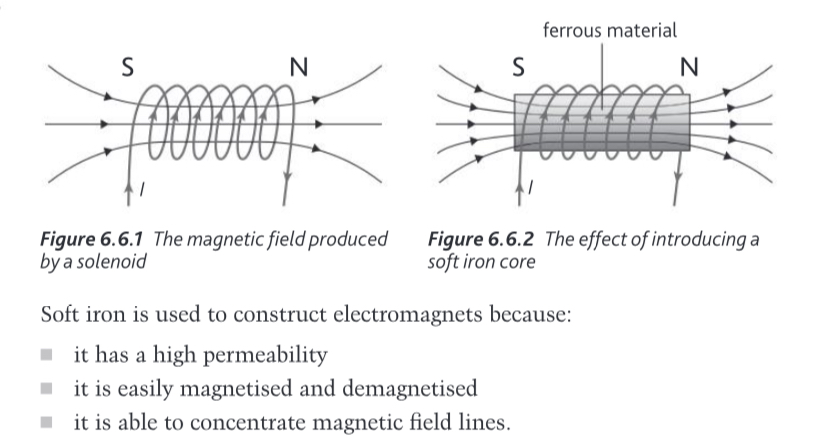
State applications of electromagnets
Electromagnets are used in devices such as electric bells, relays, circuit breakers, and magnetic cranes used for lifting heavy iron objects
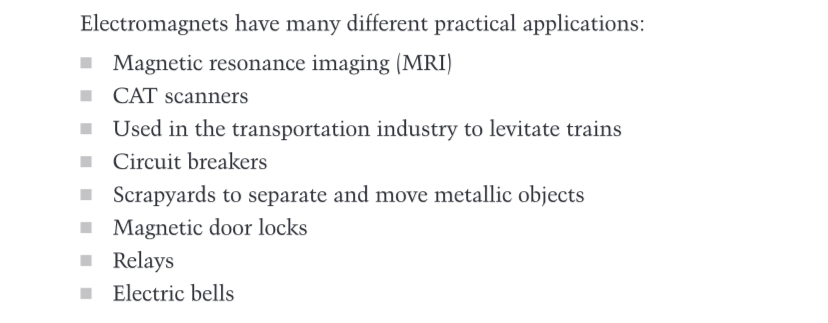
discuss applications of electromagnets For
magnetic door locks
Relays
Electric bells
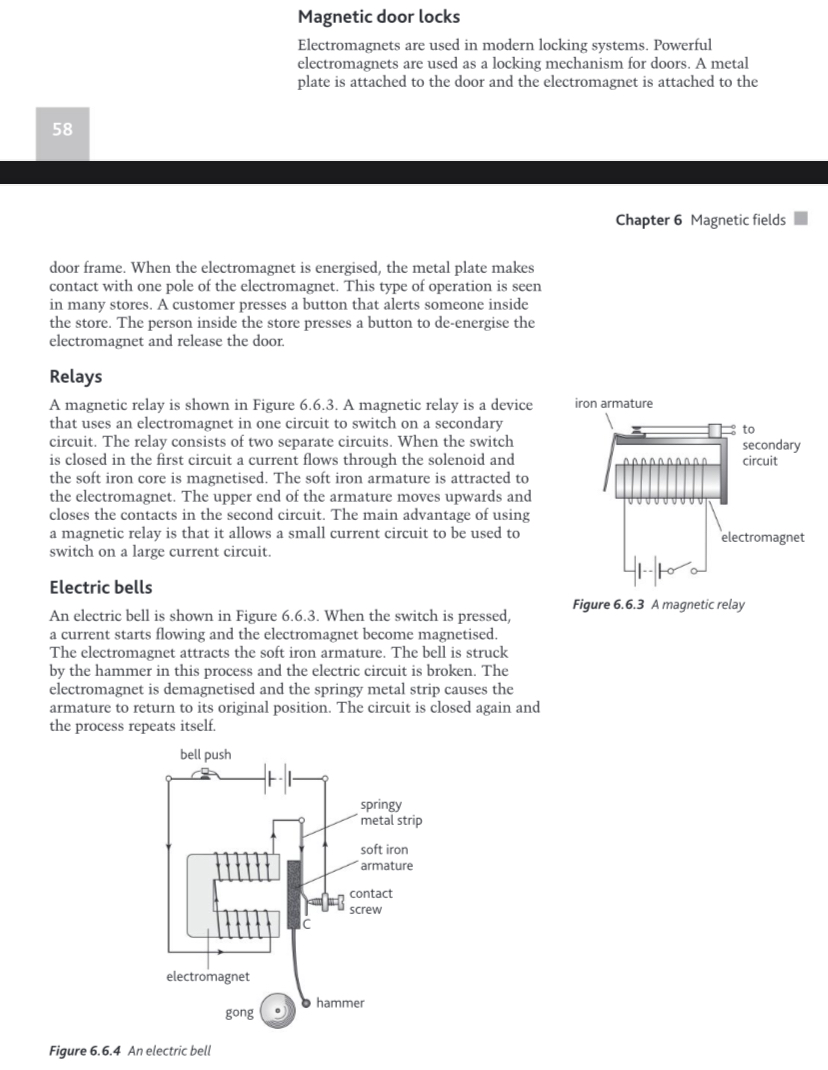
state Faraday’s law of electromagnetic induction
Faraday’s law states that the magnitude of the induced e.m.f. is proportional to the rate of change of magnetic flux linkage
Faraday’s law Equation
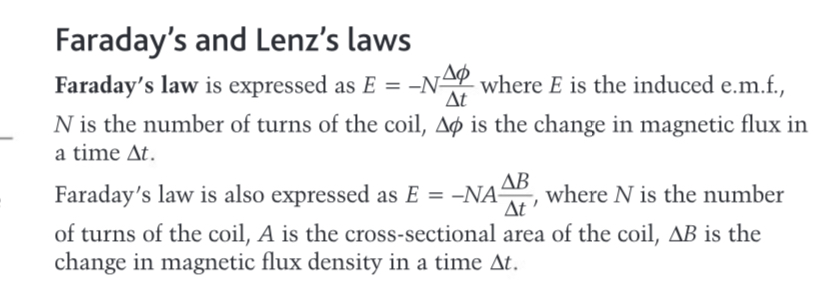
state Lenz’s law and determine the direction of an induced e.m.f.
Lenz’s law states that the direction of the induced current is such that it opposes the change that causes it.
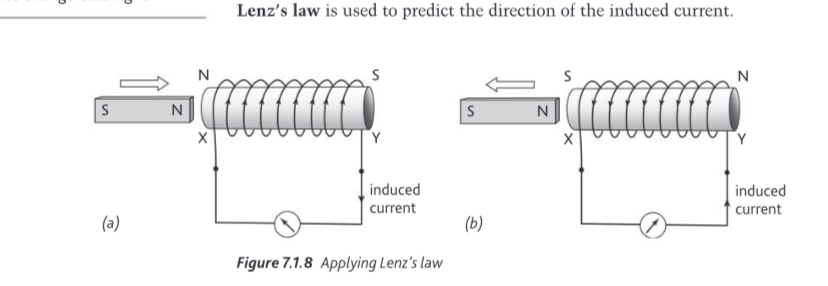
discuss Lenz’s law as an example of conservation of energy
Lenz’s law is a consequence of the law of conservation of energy because the induced current must oppose the change that produces it, otherwise energy would be created or destroyed.
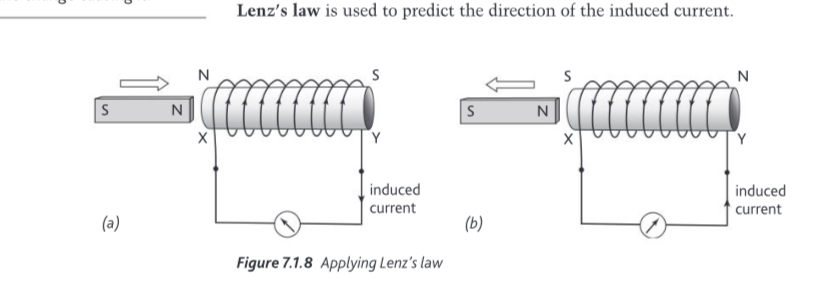
explain the principle of a simple d.c. motor
A current-carrying coil placed in a magnetic field experiences a force. The forces on the sides of the coil produce a turning moment, causing the coil to rotate.
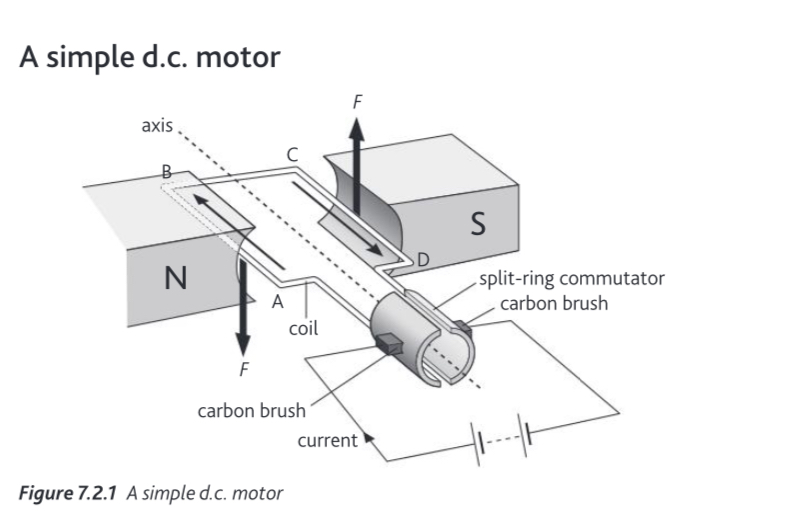
describe the construction and operation of a simple d.c. motor
A simple d.c. motor consists of a rectangular coil of wire positioned between the poles of a permanent magnet. A split-ring commutator reverses the direction of the current in the coil every half-turn, ensuring continuous rotation in one direction
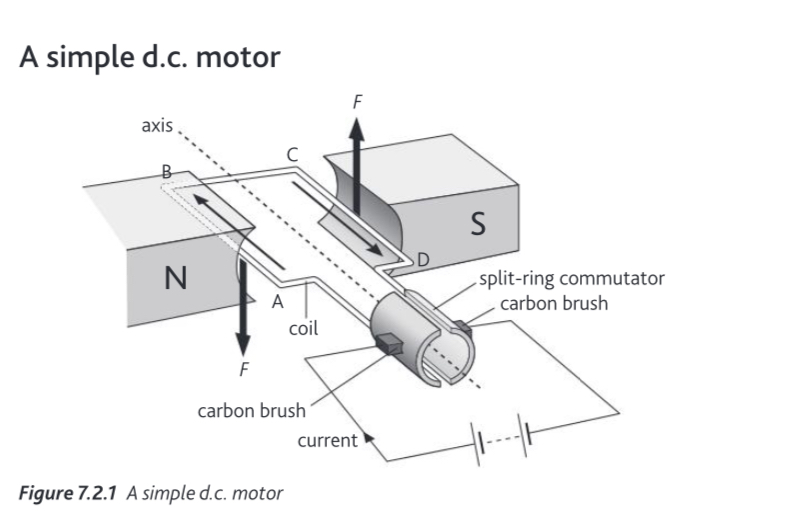
describe the construction and operation of a simple a.c. motor
A simple a.c. motor is similar in construction to a simple d.c. motor except that it uses slip rings instead of a split-ring commutator. The slip rings maintain contact with the external circuit while allowing the coil to rotate freely. In an a.c. motor, the direction of current changes every half-cycle of the alternating supply, and the motor continues to rotate.
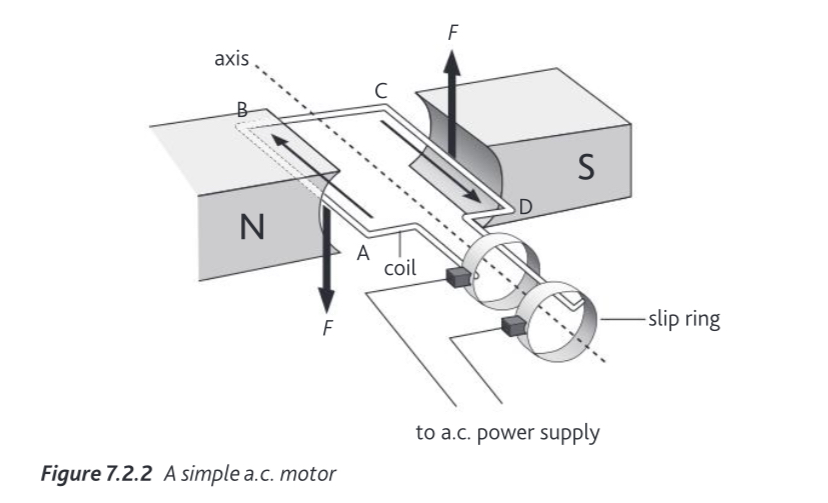
describe the construction and operation of a simple d.c. generator
A simple d.c. generator consists of a coil rotating between the poles of a magnet. A split-ring commutator is used so that the current in the external circuit flows in one direction only. The induced e.m.f. varies with time, but always in the same direction.
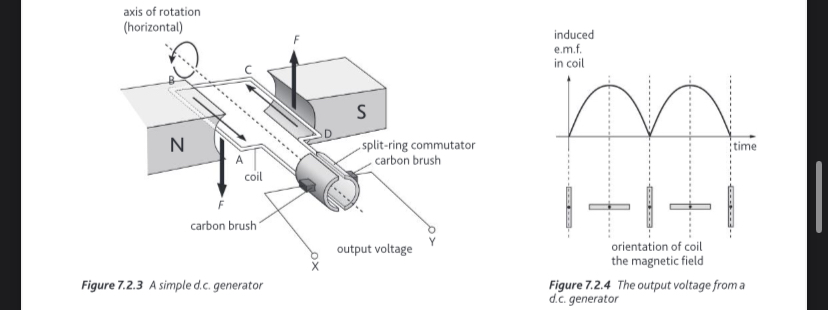
describe the construction and operation of a simple a.c generator
A simple a.c. generator consists of a coil rotating between the poles of a magnet. Slip rings are used to maintain continuous contact with the external circuit, allowing the current to reverse direction every half-turn, producing an alternating current.
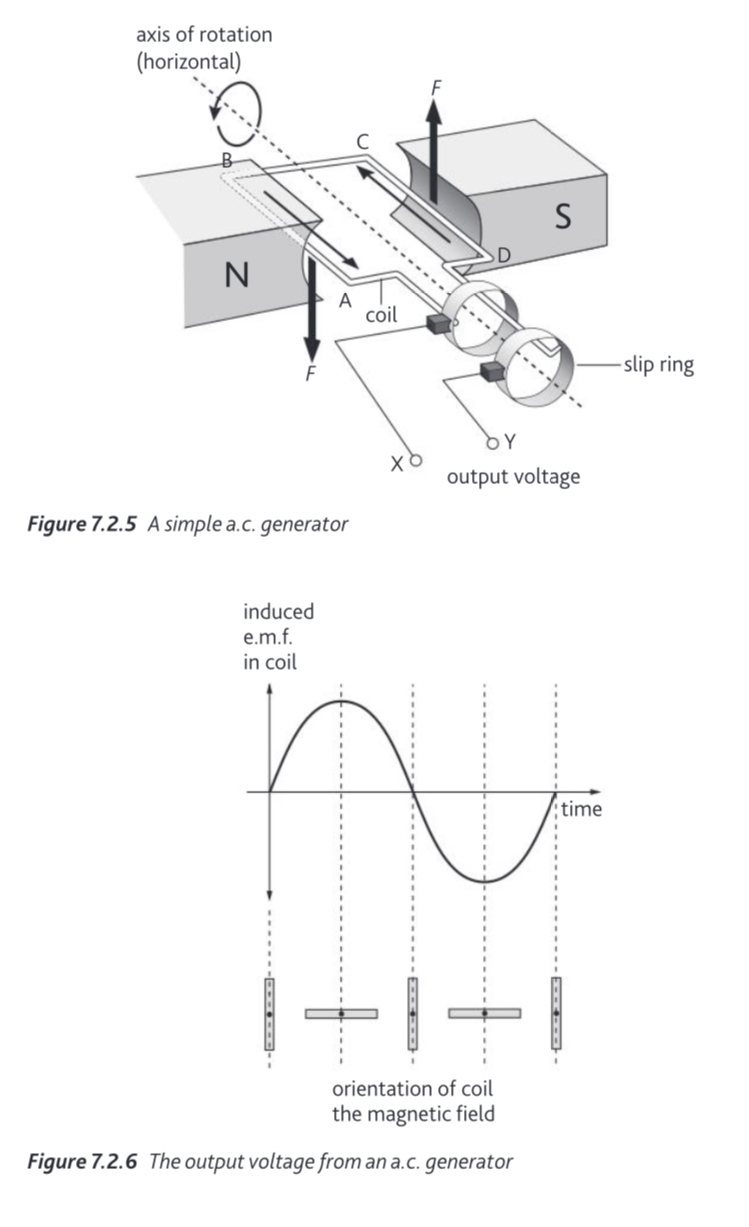
The total amount to magnetic flux through an area at right angles to the magnetic field is given by what equation

State 3 examples of electromagnetic induction
Faraday’s disc
Magnet moving in a coil
A current carrying solenoid placed near to a search coil
A washer resting on a solenoid
Explain the use of electromagnetic induction on the following:
Faraday’s disc
Magnet moving in a coil
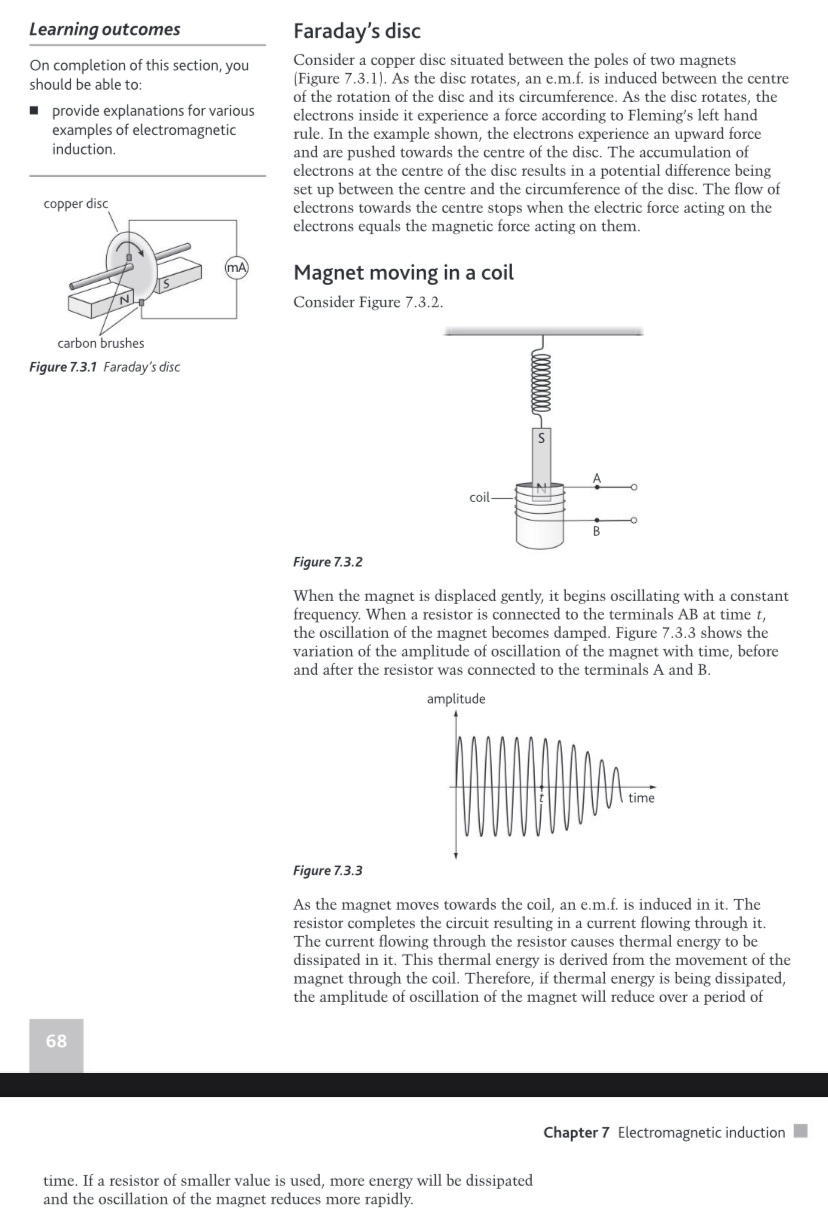
Explain the use of electromagnetic induction on the following:
A current carrying solenoid placed near to a search coil
A washer resting on a solenoid
